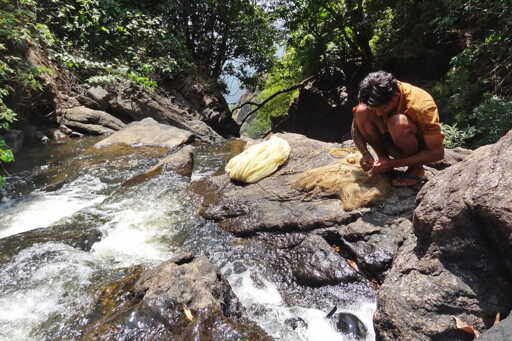Daybreak is almost nonexistent during monsoons in Raxidi, a village perched in the thick of the Western Ghats, an Indian biodiversity hotspot. It is the 7 a.m. body clock that pushes most villagers out of slumber — to enter the accurate measure of the day’s rainfall in a log, a habit passed on by the British in coffee estates. There are, however, occasions where it dawns sooner when sharp-edged winds split trees into halves and bring them to a thud. Or gusts that constantly stab the windowpanes. In Raxidi, rain, as much as coffee, is a part and parcel of life, and livelihood. Mountain slopes are covered with coffee plantations, dotted with tall silver oak trees for shade. Men and women in gumboots hold sickles and hover around the coffee bush till dusk. Raingear is paramount for protection from water and leeches. Roads that snake like garland along the hills provide breathtaking views of greener mountains farther away, engulfed by thick, heavy clouds. One such mountain is Muru Kannu Gudda, or Three-Eyed Hill, more than 1,100 meters (3,900 feet) above mean sea level in Sakleshpur taluk (administrative division) in the heart of Karnataka’s Western Ghats, about 200 kilometers (125 miles) from Bengaluru, the capital city of the southern Indian state. “This is where the Yettinahalla is born,” said Prasad Raxidi, a writer, theater person and longtime resident of Raxidi, as he pointed to the longshot view of Muru Kannu Gudda from atop an amphitheater he built with the villagers. In…This article was originally published on Mongabay
From Conservation news via this RSS feed


